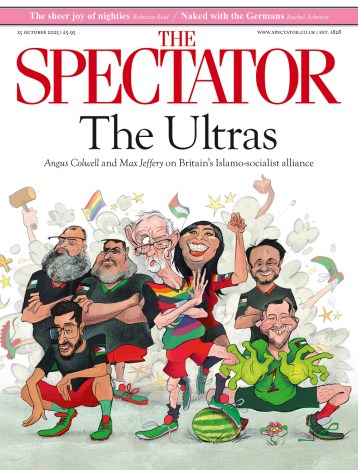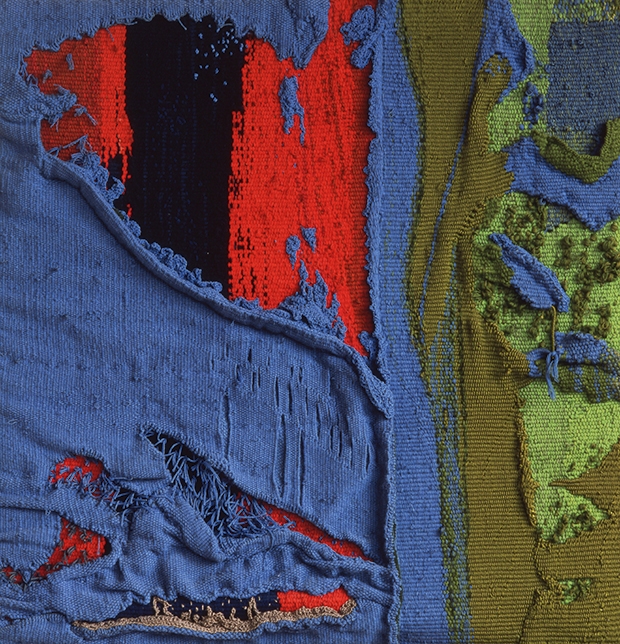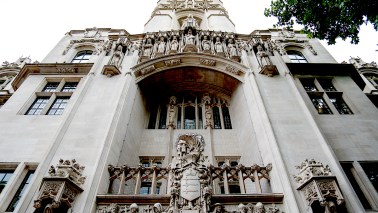‘The eye is fatigued, perverted, shallow, its culture is degenerate, degraded and obsolete.’ Welcome to the Palpable Art Manifesto of Romanian sculptor Paul Neagu. Art must be accessible to all the senses, he argued, for ten fingers will explain more than two eyes and the tongue might tell yet more again. His Palpable Sculpture is the focus of an exhibition at the Henry Moore Institute that itself ‘ascends to the condition of a work of art’, according to the Scottish artist and gallerist Richard Demarco. His opinion carries weight, for it was he who brought Neagu out of Romania in 1969 to exhibit and teach in Edinburgh.
A succession of little galleries lead the viewer through Neagu’s playful mind. His curious, inventive assemblages, box-like forms often filled with gnomic grids or reduced human shapes, demand examination. There are surprising materials among the wood and metal. In one corner we see a shallow open box in which little pinned squares of gingerbread make up a human form; in another, a poster for a 1971 cake-sculpture-eating happening (£12 got you a segment of the cake and a screen print).
One room is dedicated to the Generator series. Each drawing or sculpture plays with a recurrent triangular symbol Neagu called the Hyphen. The drawings resemble plans for lost medieval inventions while the sculptures crouch together on the floor, tight geometric arrangements poised like trebuchets.
Hanging from the ceiling on thin wire in another room are gnarly little wooden boxes, some filled with wooden blocks wrapped in hobnailed felt or leather, a craftsman echo of Neagu’s cobbler father. These objects were made to hang in a space where the viewer could brush against them, touch them, smell them — probably lick them if they felt so inclined. There are photos of this from the Demarco Gallery, viewers with a cigarette in one hand and a sculpture in the other. It is a sad irony that here in Leeds these works are guarded by stern ‘Do Not Touch’ signs. They have become the distanced, venerated works they were designed to subvert.
At The Hepworth is an exhibition of Anthony Caro sculpture. He also wanted to democratise sculpture, to alter the relationship between art and audience, but his work is not for touching. The tangled steel of ‘Ceiling Piece’ hovers high like a scribbled cloud in a lofty corner and plays on the tension between the strength of the materials and the airy lightness of the construction. ‘The Window’ is an uneasy congregation of painted steel forms that seem barely able to balance, standing on thin edges, slicing the space around them. As with ‘Hopscotch’, a delicate scaffold of aluminium, the groundless fear is that one touch might cause collapse.
The same tension runs through the Table Pieces that form the backbone of this show. Squatting precipitously on the corner of their plinths, these works play with gravity while coaxing the eye around their convoluted forms. The most splendid is ‘Déjeuner sur l’herbe II’ in which Manet’s painting of the same name seems to have been swallowed by Giacometti’s ‘Woman with Her Throat Cut’. The jumble of structures sprawls over the edge of the plinth: the softened, bent steel forms contrasting with the flat discs and sheer edges of girder. It is an unsettling and absorbing piece. Less convincing are the Last Sculptures — solid and lumpish, lacking the drama and delicacy of the earlier work.
Bernat Klein, who like Neagu and Caro was at his peak in the 1960s and ’70s, is the subject of an eye-catching show at Dovecot Studios in Edinburgh. A major figure in Scottish textile design, Klein produced radical, visionary fabrics. Working from his studio outside Selkirk (itself a modern masterpiece, designed by Peter Wormersley and now in a tragic state of neglect), he was also a prodigious painter. The Dovecot exhibition highlights this, showing his paintings alongside a series of inventive tapestries based upon them.
Klein used painting to experiment with texture and colour before translating his discoveries into textiles. These rarely seen paintings are exuberant, geometric abstracts. Klein creates a weave effect, applying the paint in grid-like blocks across the canvas. He thought colour as important in life as words, and his mastery of the palette is complete. The reds are energised by slashes of green, the purples offset by ultramarine, while the more sombre paintings are restrained exercises in tonal and textural gradation. ‘All my inspiration has been derived from nature,’ Klein said, and in ‘Blue and Brown Composition into Green’ we see as resonant an abstract portrait of a sodden day in Selkirkshire as any created by that other great Ettrick artist, William Johnstone. Intense and substantial, this is palpable painting.






Comments